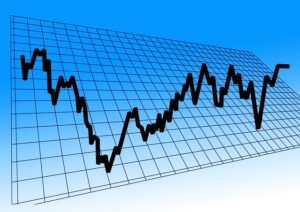High-frequency trading has become increasingly popular in recent years as technology advancements have allowed traders to execute trades at lightning-fast speeds. But the question remains: is high-frequency trading actually profitable?
I delved into this topic and explored various studies and data to provide an answer. Some argue that high-frequency trading can be highly profitable due to its ability to quickly capitalize on small price movements in the market. However, others believe that the costs associated with implementing such strategies outweigh any potential profits.
Through my analysis, I will examine both sides of the argument and present evidence supporting each viewpoint. Ultimately, it is important for investors to understand whether or not high-frequency trading can truly lead to profitability before incorporating it into their investment strategy.
The Mechanics Of High-Frequency Trading
 High-frequency trading (HFT) is a type of algorithmic trading that uses powerful computers to execute trades at incredibly high speeds. HFT firms use complex algorithms to analyze market data and make decisions about buying or selling securities within fractions of seconds.
High-frequency trading (HFT) is a type of algorithmic trading that uses powerful computers to execute trades at incredibly high speeds. HFT firms use complex algorithms to analyze market data and make decisions about buying or selling securities within fractions of seconds.
One key advantage of HFT is its ability to capitalize on market volatility. As markets fluctuate, HFT programs can quickly identify opportunities and execute trades before slower traders even have time to react. This allows HFT firms to make profits in both rising and falling markets.
While there are concerns about the potential risks associated with HFT, it has proven to be a profitable strategy for many firms. However, success in this field requires significant investment in technology infrastructure and ongoing research and development.
The Potential For Profitability
High-frequency trading (HFT) has been a popular topic among traders and investors alike. While the technique of HFT involves executing trades at high speeds, many are still wondering if it is indeed profitable.
There is no simple answer to this question as profitability can vary depending on several factors. One potential for profitability lies in the ability of HFT firms to identify patterns in market movements that may not be visible to human traders. This advantage allows them to execute trades quickly and efficiently, leading to potentially higher profits.
However, with great potential for profit also comes potential risks. One major risk associated with HFT is market volatility. Rapid changes in prices or sudden shifts in market sentiment can result in significant losses for HFT firms.
As such, it is important for these firms to have robust risk management strategies in place to mitigate any adverse effects caused by volatile markets.
To engage audiences further, here are three key takeaways regarding the potential profitability of HFT:
- The use of advanced algorithms and technology provides an advantage over traditional forms of trading.
- Market volatility poses a significant risk that needs careful consideration.
- Risk management plays a critical role in ensuring sustainable profit margins.
While there is certainly potential for profit through high-frequency trading, it comes with inherent risks that must be carefully managed. It is crucial for firms engaging in this practice to understand the nuances of the market they operate within and invest heavily into developing solid risk management protocols. By doing so, they can maximize their chances of achieving sustained profitability over time.
The Costs Of High-Frequency Trading
In the previous section, we explored the potential for profitability in high-frequency trading. It’s no secret that this type of trading can yield significant gains when executed correctly. However, it’s important to note that these profits don’t come without costs.
One major expense associated with high-frequency trading is hidden expenses. These expenses include fees paid to exchanges and data providers, as well as costs related to maintaining a high-speed network infrastructure. While these may seem like minor costs at first glance, they can add up quickly and eat into overall profits.
Another concern surrounding high-frequency trading is market manipulation. Some critics argue that HFT firms use their speed advantage to unfairly manipulate prices or front-run trades from slower investors. While there have been instances of such behavior in the past, regulators have taken steps to prevent and punish any illegal activity.
Overall, while high-frequency trading has the potential for great profitability, traders must be aware of the hidden expenses associated with this type of strategy. Additionally, it’s crucial to operate within legal boundaries and avoid any unethical practices such as market manipulation.
By doing so, traders can maximize their profits while minimizing risks and negative impact on financial markets.
Arguments Against High-Frequency Trading
High-frequency trading has been a controversial topic in the financial industry due to its alleged negative effects on market volatility and investor confidence.
One of the arguments against high-frequency trading is regulatory concerns. There are worries that such trades can lead to unfair advantages for certain traders, creating an uneven playing field in the markets.
Furthermore, critics argue that high-frequency trading algorithms amplify market volatility by increasing liquidity during times of calm but quickly withdrawing it when there is turbulence. This sudden shift in liquidity can create significant price swings that harm retail investors who do not have access to these sophisticated trading tools.
Another argument against high-frequency trading is that it creates mistrust among investors who believe they are competing with machines rather than other humans. This perception may discourage individual investors from participating in the stock market altogether, leading to lower levels of investment and decreased economic activity.
Overall, while some proponents of high-frequency trading argue that it boosts market efficiency and provides valuable liquidity, many others remain skeptical about its long-term impact on financial stability and investor trust.
As regulators continue to grapple with how best to regulate this rapidly evolving sector, it remains unclear whether or not high-frequency trading will prove profitable over time.
The Bottom Line: Is High-Frequency Trading Worthwhile?
High-frequency trading (HFT) has become increasingly popular among traders due to its potential for generating quick profits. However, the question remains: is it actually worthwhile? The answer lies in risk management and market volatility.
One of the main advantages of HFT is its ability to manage risks more efficiently than traditional forms of trading. By using algorithms that analyze market data at lightning speed, traders can minimize their exposure to price fluctuations and other risks. This allows them to make better-informed trades with less uncertainty, which ultimately leads to higher profitability.
However, this does not mean that high-frequency trading is without risk. Market volatility can cause significant losses if proper risk management strategies are not employed. For example, sudden changes in supply or demand can lead to rapid shifts in prices that HFT systems may not be able to keep up with.
Traders need to constantly monitor market conditions and adjust their strategies accordingly to mitigate these risks. In summary, high-frequency trading can be a profitable strategy if executed correctly through effective risk management techniques. However, traders must also remain vigilant about changing market conditions and adapt their approaches as needed in order to avoid costly losses stemming from unexpected events like increased volatility or sudden price movements.
What Is The Impact Of High-Frequency Trading On Market Volatility?
Algorithmic trading algorithms have significantly impacted market volatility, particularly in the realm of high-frequency trading.
The use of complex algorithms has enabled traders to react to market changes at lightning speed, resulting in increased liquidity impact on various markets.
However, this technology has also contributed to an increase in market volatility as these algorithms can trigger a chain reaction across multiple securities simultaneously.
Financial research analysts continue to debate the long-term effects of high-frequency trading and its impact on overall market stability.
How Can Individual Investors Compete With High-Frequency Traders?
Individual investors may feel intimidated by high-frequency traders, who use algorithmic trading strategies and have access to advanced technology. However, there are ways for individual investors to compete with these traders.
One strategy is to utilize limit order books, which allow investors to specify the price at which they are willing to buy or sell a security.
Additionally, investors can focus on long-term investments rather than trying to make quick profits through day trading.
While it’s true that high-frequency trading can be profitable, individual investors can still find success in the market by utilizing different strategies and focusing on their own strengths.
It’s important to consider all options when evaluating investment opportunities.
What Are The Ethical Implications Of High-Frequency Trading?
It is imperative to address the ethical implications of high-frequency trading.
One major concern is the lack of regulatory oversight in this area, which has led to instances of market manipulation and unfair advantage for those with advanced technology and faster access to information.
This not only raises questions about the legality of such practices but also undermines investor confidence in the integrity of the markets.
It is essential that regulators take steps to ensure transparency and fairness in high-frequency trading to protect investors’ interests and restore trust in the financial system.
Can High-Frequency Trading Lead To Market Crashes?
Algorithmic trading, particularly high-frequency trading (HFT), has been a significant contributor to the speed and efficiency of modern financial markets. However, it also raises concerns about its potential impact on market stability.
Flash crashes – sudden and severe drops in prices followed by quick recoveries within minutes or even seconds – have occurred multiple times over the past decade as a result of HFT. While some believe that these events are merely technical glitches, others argue that they signify deeper systemic issues related to algorithmic trading that can lead to devastating consequences if left unchecked.
As such, regulators must continue to closely monitor the use of algorithms in financial markets to prevent future flash crashes from occurring and ensure market stability is not compromised.
What Regulatory Measures Are In Place To Monitor And Control High-Frequency Trading?
Market surveillance is a crucial component in regulating high-frequency trading.
The rise of algorithmic trading strategies has led to an increased need for monitoring and control measures in the financial industry.
One example of this was seen during the 2010 Flash Crash, where market surveillance systems detected abnormal activity and promptly shut down certain exchanges to prevent further damage.
However, while regulatory bodies have implemented various rules and guidelines, there remains concern about the potential loopholes that could be exploited by HFT firms.
As such, continued research into more effective methods of detecting manipulative practices will remain essential going forward.
In conclusion, high-frequency trading has become a prominent feature of modern financial markets.
While it can be profitable for those who engage in it, there are concerns about its impact on market volatility and the ability of individual investors to compete with high-speed algorithms.
It is important for regulators to monitor and control high-frequency trading to ensure that ethical standards are upheld and prevent potential market crashes.
As research analysts, we must continue to study the effects of high-frequency trading on the economy and strive towards finding a balance between technological advances and fair competition in financial markets.
Ultimately, our goal should be to create an environment where all participants have equal access to information and opportunities.
